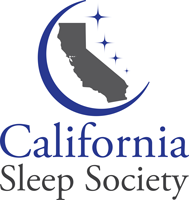By: Robyn Woidtke, RN, RPSGT
As plain as the nose on your face; or is it?
In addition to being quite an interesting physical attribute of the human anatomy, the role of the nose is a significant component when considering initiation and on-going adherence to treatment of obstructive sleep apnea (OSA).
The nose is an important and complex instrument. Its functions include certain aspects of smell and taste, phonation and breathing of course. Its specialty is warming and filtering the air and acting as a conduit to bring air into the lungs and excreting the oxygen-depleted air out. The nose accounts for about 50% of the total airway resistance, which is important when discussing things that increase that resistance.
When the function of the nose is compromised in patients with OSA, this can lead to comfort and non-adherence issues. Probably the most common problem is allergic rhinitis. The prevalence is estimated to be about 15% diagnosed and up to 40% self-report. The incidence varies by geography and time of year; the most common symptoms are nasal congestion, sneezing, watery eyes and rhinorrhea. Anatomical causes include deviated septum, enlarged turbinates and nasal trauma. 1-4
Difficulty with nasal breathing and even normal nasal cycling can negatively impact sleep quantity and quality, thus improving nocturnal nasal breathing can also help with daytime symptoms. When breathing shifts to oral breathing, the jaw drops backward and further narrows the retroglossal space, leading to increased airflow moving and vibrating the soft tissues causing increased resistance and snoring. As described in Wilhelm, et al. 5 during normal nasal breathing, the upper airway dilator muscles are stimulated by the negative pressure, keeping the airway open, however during oral breathing, this stimulation does not occur, thereby increasing collapsibility. Oral breathing has been associated with worsening OSA. Liistro et al.6 demonstrated that in the presence of a high Mallampati score along with nasal obstruction the relative risk was 2.45 to predispose one to OSA.
Nasal issues have been found to contribute to continuous positive airway pressure acceptance and non-adherence as well as mask choice, therefore a nasal exam should be done for each patient who undergoes therapy for OSA. Nasal assessment should also be done for those patients choosing to use an oral appliance. Simple nasal assessment has some limitations as anterior rhinoscopy evaluation may not detect posterior obstruction 7. In addition to the nasal exam, a good place to start is to use the Nasal Obstruction Symptom Evaluation (NOSE) questionnaire. The NOSE questionnaire is a five-question validated scale to assess nasal obstruction on a scale of 0-100. A score of 30 or above is highly correlated with symptoms.8 The NOSE questionnaire has also been used to determine mask type and surgical risk for undiagnosed sleep apnea. 9,10
In summary, assessment of nasal obstruction or congestion is an important element of patient evaluation. Understanding the impact of such nasal findings on treatment adherence, worsening of oral breathing and impact to sleep quality reinforces the need to include robust examination of the anatomy and inquiry of patient symptoms. Identifying nasal issues early in the OSA evaluation process may help to determine the right pathway for treatment.
- Michels, D. D. S., Rodrigues, A. D. M. S., Nakanishi, M., Sampaio, A. L. L., & Venosa, A. R. (2014). Nasal involvement in obstructive sleep apnea syndrome. International journal of otolaryngology, 2014.
- Wheatley, L. M., & Togias, A. (2015). Allergic rhinitis. New England Journal of Medicine, 372(5), 456-463.
- Ferrando, M., Braido, F., Baiardini, I., & Canonica, G. W. (2013). Prevalence and impact of rhinitis, sleep disordered breathing and OSA in asthmatic patients. Shortness of breath, 2(3), 125-130.
- Catalano, P., & Walker, J. (2018). Understanding Nasal Breathing: The Key to Evaluating and Treating Sleep Disordered Breathing in Adults and Children. Curr Trends Otolaryngol Rhinol: CTOR-121. DOI, 10.
- Wilhelm, C. P., deShazo, R. D., Tamanna, S., Ullah, M. I., & Skipworth, L. B. (2015). The nose, upper airway, and obstructive sleep apnea. Annals of allergy, asthma & immunology: official publication of the American College of Allergy, Asthma, & Immunology, 115(2), 96.
- Liistro, G., Rombaux, P. H., Belge, C., Dury, M., Aubert, G., & Rodenstein, D. O. (2003). High Mallampati score and nasal obstruction are associated risk factors for obstructive sleep apnoea. European Respiratory Journal, 21(2), 248-252.
- Torre, C., Capasso, R., Zaghi, S., Williams, R., & Liu, S. Y. C. (2017). High incidence of posterior nasal cavity obstruction in obstructive sleep apnea patients. Sleep Science and Practice, 1(1), 8.
- Lipan, M. J., & Most, S. P. (2013). Development of a severity classification system for subjective nasal obstruction. JAMA facial plastic surgery, 15(5), 358-361.
- Lebret, M., Arnol, N., Martinot, J. B., Tamisier, R., Deschaux, C., Pépin, J. L., & Borel, J. C. (2018). Nasal Obstruction Symptom Evaluation Score to Guide Mask Selection in CPAP-Treated Obstructive Sleep Apnea. Otolaryngology–Head and Neck Surgery, 159(3), 590-592.
- Ishii, L., Godoy, A., Ishman, S. L., Gourin, C. G., & Ishii, M. (2011). The nasal obstruction symptom evaluation survey as a screening tool for obstructive sleep apnea. Archives of Otolaryngology–Head & Neck Surgery, 137(2), 119-123.
